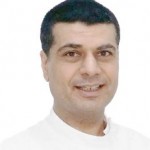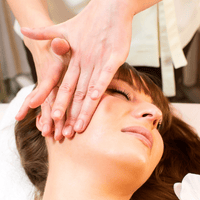Science of Quick Healing
When you have a pain there is a strong instinct to rub it. True when you were a little child and you may have grazed your knee, a parent may have “rubbed it better”. But it could it be the worst thing to do to an injury or pain! We explain the things you can do and why, to better help you manage your own recovery.
Managing inflammation vs muscle Spasm
What You Need To Know First. The body responds to almost all damage in the same way – inflammation. This means the spine and it’s tissues, produce fluid to try and bathe the area, accompanied with a muscle spasm for protection. The unique problem with back and spine pain is that the accompanying muscle spasm can grow larger and larger if we don’t take the right type of rest as it tries to support the damaged section of the spine. This muscular compensation itself can become a source of further pain. In real-life it’s actually quite difficult to tell the difference between muscle spam & inflammation. This is important as each needs to be treated quite differently.
The principle is usually simple, cool inflamed tissues and *gently massage muscle spasms (see end of article). But knowing which is which as mentioned before, is not easy to discern.
Inflammation. Perhaps the best way to know which is which is to ask a friend to gently examine the injured area. Inflamed tissues are typically swollen and hotter than surrounding tissues, and almost always acutely painful to touch. It usually feels like a “bouncy castle”. Press lightly and repeat several times; compare with the other side.
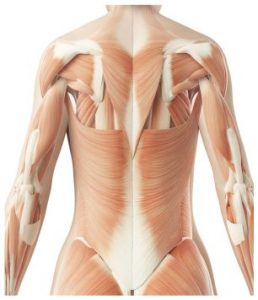 Muscle spasms can a bit tricky. A clever way to work out if it is a spam is to try bending sideways to the opposite side you think the spams is on. If the spasm exists, bending to the opposite side will be painful or reduced. For example if you have a spam on the left low back, it will be harder to side-bend to the right. Note: however certain cases where there is both inflammation and spam on the same side, then bending to the same side can be painful. If you can’t work it out, you may need professional help.
Muscle spasms can a bit tricky. A clever way to work out if it is a spam is to try bending sideways to the opposite side you think the spams is on. If the spasm exists, bending to the opposite side will be painful or reduced. For example if you have a spam on the left low back, it will be harder to side-bend to the right. Note: however certain cases where there is both inflammation and spam on the same side, then bending to the same side can be painful. If you can’t work it out, you may need professional help.
Once you know where inflammtion and is spasm is, you need to treat them differently. You can apply a cold pack to the inflammed tissue and massage or heat to the muscle spam. Generally both of these should be applied no more than 10 – 15 mins at a time, though it can be repeated several times a day, say no more than to 6 -10 times in a day – see next paragraph
Managing Hot & Cold
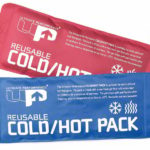 Cold is a great anti-inflammatory, it helps to reduce the swelling which causes pain 😊. But cold can make muscles stiffen & tighten up too ☹. Heat is a great muscle relaxant, reducing stiff, tight painful muscle spams 😊, but unfortunately has the effect of increasing inflammation ☹. That’s why we oppose people using a hot water bottle on the injury (which can increase inflammation) and then taking Neurofen – to take the inflammation away! The one works against the other and you get nowhere fast.
Cold is a great anti-inflammatory, it helps to reduce the swelling which causes pain 😊. But cold can make muscles stiffen & tighten up too ☹. Heat is a great muscle relaxant, reducing stiff, tight painful muscle spams 😊, but unfortunately has the effect of increasing inflammation ☹. That’s why we oppose people using a hot water bottle on the injury (which can increase inflammation) and then taking Neurofen – to take the inflammation away! The one works against the other and you get nowhere fast.
Managing Movement vs Rest
It’s difficult to know when to rest or move or indeed how to rest or what sort of movements to do! Let's clarify this a bit:
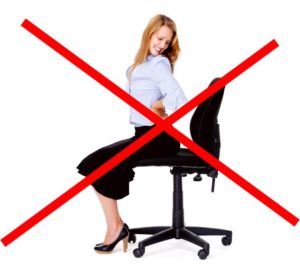 Rest – the point is to eliminate strain on an injury whilst it’s trying to heal.
Rest – the point is to eliminate strain on an injury whilst it’s trying to heal.
Gravity works against healing. Rest is paramount, but rest does not mean sitting! When you are not lying down it means you are “up”. That means your body will be fighting gravity whether you are sitting, driving, shopping, walking, using a PC etc. This puts extra work on the muscles which are already compensating to protect the injury and then those muscles have to fight against gravity to hold you up. It’s a big ask on the body.
You can look at this another way too. A man visits his GP and asks for antibiotics for his chest infection. As he leaves he flips a cigarette out of his top pocket and starts to smoke it. Obviously this can slow his recovery or at worst prevent him healing. To an osteopath gravity is like the cigarette – it works against healing. Try and avoid things like sitting, standing etc.
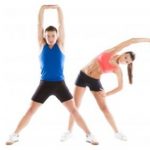 Movement – movement helps to drain inflammation and, at the right time, speeds up healing. The question is how much but the principle is actually simple. If after being on your feet say 20 minutes you notice symptoms, next time you will try and be on your feet only 15 minutes. It’s like a savings account.
Movement – movement helps to drain inflammation and, at the right time, speeds up healing. The question is how much but the principle is actually simple. If after being on your feet say 20 minutes you notice symptoms, next time you will try and be on your feet only 15 minutes. It’s like a savings account.
Movement is King: walking keeps the spine safe and the muscles strong. In the later stages of recovery walks in nature is particularly helpful as the walking posture changes with each foot step.
A Special Word About Sitting
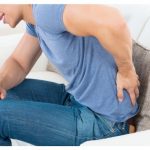 Sitting has never been proven to cause back pain. However when you do have back pain it is a high risk factor against healing. Perhaps that’s why people don’t always recognise sitting as an incumbency to healing, because they were doing it previously without harm and now need a paradigm shift to refrain from sitting. It’s a hard bridge to cross for many patients, but if you can get your head around that healing can be as fast and full as possible.
Sitting has never been proven to cause back pain. However when you do have back pain it is a high risk factor against healing. Perhaps that’s why people don’t always recognise sitting as an incumbency to healing, because they were doing it previously without harm and now need a paradigm shift to refrain from sitting. It’s a hard bridge to cross for many patients, but if you can get your head around that healing can be as fast and full as possible.
Managing Pain Relief Medicines
Paracetamol, codeine & Ibuprofen
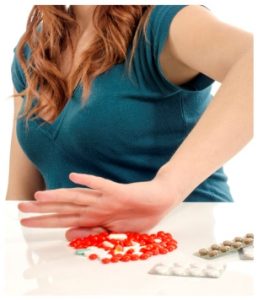 The confusion with paracetamol and ibuprofen is that they are often referred to as “pain killers”. In fact only paracetamol & codeine are actually pain killers, whilst ibuprofen is an anti-inflammatory. The trick here is to work out if you are suffering more from inflammation or muscle spasm – which takes us back to “Inflammation vs Muscle Spasm” above. If it is predominantly muscle spasm paracetamol or codeine would be best; if inflammation then ibuprofen would be indicated. However if it is both, some medical practitioners prescribe both.
The confusion with paracetamol and ibuprofen is that they are often referred to as “pain killers”. In fact only paracetamol & codeine are actually pain killers, whilst ibuprofen is an anti-inflammatory. The trick here is to work out if you are suffering more from inflammation or muscle spasm – which takes us back to “Inflammation vs Muscle Spasm” above. If it is predominantly muscle spasm paracetamol or codeine would be best; if inflammation then ibuprofen would be indicated. However if it is both, some medical practitioners prescribe both.
The main problem with taking any of these pills, is that we usually need some level of pain to help remind us to be ‘good’ – like lying down or avoiding sitting. That’s one of the main reasons why people who self-prescribe eventually no longer respond to their medicines as they have over-ruled their body’s need for rest and made the injury worse.
Medical Information
Science of Pain
i) Nerves
One of the reasons why sitting is such an deceptive form of injury is because we have relatively few nerve fibres in our backs, as compared for example, to our lips.
The reduced number of nerve endings in the back mean it is less likely we will be aware of injury when compared to stimuli on the hands for example. This means we will not always be aware if we are hurting ourselves through sitting, as and when our muscular posture starts to fail. Remember at the end of the day if it is ‘gravity’ vs ‘muscles’, gravity wins hands down and your spine will lose.
ii) Muscles
When the spine is trying to heal it asks certain muscles to support the injury. However these same muscles may also be needed for good posture, ie sitting or standing.
What you need to know
A single back muscle is made up of many groups of muscle fibres. These are known as a medically as a motor-units. We will call it a muscle-fibre-group in this example.
Example
For the sake of principle, lets say 3 muscle-fibre-groups make up a single back muscle. And also each muscle-fibre-group can only contract for 5 minutes, before it tires and needs a rest. We can see by the end of 15 minutes all 3 muscle-fibre-groups would have all worked once. So if we ask the muscle to work further, ie onward from 16 minutes, we have to recruit the first muscle-fibre-group again, even though it may not be fully rested / recovered. Naturally by the time all these muscle-fibre-groups have run a second innings they may start to give up, and naturally the posture fatigues, and eventually the weight of the body falls on to the spine, ligaments and discs causing it to hurt, weaken, or worse, deepen the injury.
It is exactly for this reason there is no “good” posture. The trick is not to stay in one position too long. Remember fidgets don’t get back pain because they are not in one position long enough to get it.
Keeping good posture is hard on our muscles at the best of time, let alone when we are injured. Asking the muscles to do 2 jobs at the same time (hold the injury together and keep your posture) is a big ask.
iii) Sleep
The genes for healing are most active during night sleep, in other words day-time healing is much much less powerful. It stands to reason the more you sleep the higher the level of healing. Plus, if you go to bed earlier by one hour during injury, over 7 nights, you have the equivalent of an extra night’s sleep. Further, if you are lying down one hour earlier each day, that’s one hour less the body has to battle against gravity. Give it a try – if you are really suffering try going to bed early for one week and see the difference.
A good tip is to avoid lying on the painful side. You may prefer to use a small pillow between your legs if it is low backpain.
Final Word
We know its not always possible to do the right things all the time, but if you know how to keep in control you have a better say over your outcome. To some degree this means you can prioritise what’s important to you at a given point in time: healing or carrying on working. Being better informed helps you to know if you are doing right from wrong, and good from bad.
If you find this article helpful please share with a friend or if you would like to know how we may be able to help you please fill in this online form.
Vispi Jamooji Do PGCert SPOP
REGISTERED OSTEOPATH 1986
* massaging muscle spams can make the injury worse. Some muscle spams is there to protect the spine. Releasing too much of the spam can take the protection away making the spine vulnerable to potentially serious re-injury in the worst cases.
If in doubt seek professional; advice, – call us on 02089462331

